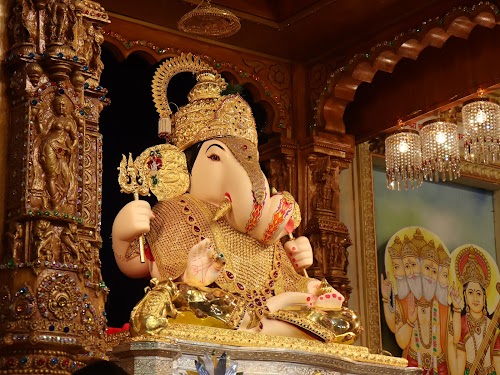
Shreemant Dagdusheth Halwai Ganpati Temple
Pune, India
- Admire the gold idol.
- Experience the temple atmosphere.
- Observe the temple architecture
- Offer prayers to Lord Ganesha.
- Participate in festival celebrations.
- Witness the Aarti ceremony.
Known for:
Description:
The Shreemant Dagdusheth Halwai Ganpati Temple in Pune is one of the most revered and visited temples in India, dedicated to Lord Ganesha. The temple is known for its stunning idol of Lord Ganesha, adorned with gold and precious stones. The vibrant atmosphere, elaborate decorations, and the sheer devotion of the devotees create a unique and spiritual experience. The temple trust is actively involved in social work and charitable activities, making it a significant cultural and social center in Pune. Throughout the year, the temple hosts various festivals and events, attracting millions of devotees from all over the world. The sheer grandeur and spiritual ambiance of the temple make it a must-visit destination for anyone seeking blessings and a glimpse into the rich cultural heritage of Maharashtra.
History:
The temple's history dates back to 1893 when Dagdusheth Halwai, a sweetmeat seller, lost his son to the plague. Deeply saddened, he was advised by his guru to create an idol of Lord Ganesha and worship him. Dagdusheth, along with his wife Lakshmibai, built the first Ganesha idol, which was publicly displayed and worshipped. Over time, the small idol grew into the magnificent deity seen today. Lokmanya Tilak, a prominent freedom fighter, was a close friend of Dagdusheth and encouraged the public celebration of Ganesh Chaturthi, further popularizing the temple and its deity. The temple trust has since been managed by the Halwai family and dedicated devotees, ensuring the continuation of the traditions and charitable work initiated by its founders. The current temple structure was built later, replacing the original one.